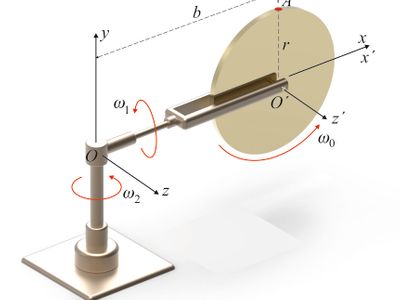The laws of mechanics for a system of particles. Rigid body two dimensional kinematics. Moments of inertia and products of inertia. Rigid body two dimensional dynamics. The laws of mechanics in accelerated reference frames.
SG1113 Mechanics, Continuation Course 6.0 credits

Mechanics, mainly kinematics and dynamics of bodies and analytical mechanics
Information per course offering
Information for Autumn 2026 CTFYS, CL programme students
- Course location
KTH Campus
- Duration
- 24 Aug 2026 - 23 Oct 2026
- Periods
Autumn 2026: P1 (6 hp)
- Pace of study
50%
- Application code
11453
- Form of study
Normal Daytime
- Language of instruction
Swedish
- Course memo
- Course memo is not published
- Number of places
Places are not limited
- Target group
- CTFYS åk 2, CLGYM MAFY, CMEDT åk 3
- Planned modular schedule
- [object Object]
- Schedule
- Schedule is not published
Contact
Course syllabus as PDF
Please note: all information from the Course syllabus is available on this page in an accessible format.
Course syllabus SG1113 (Autumn 2019–)Content and learning outcomes
Course contents
Intended learning outcomes
After completing the course the student should be able to:
- read and understand mathematical text applied in the field of mechanics and communicate reasoning and calculations in this field orally and in writing in such a way that they are easy to follow,
- report derivations of the course's central relationship,
- identify a concrete mechanical problem, and choose suitable mechanical models based on a problem description,
- translate the mechanical model into a mathematical model,
- mathematically treat the problem and critically analyze the significance of the result,
in order to use a physical mindset and communicate this within the framework of engineering science contexts.
Literature and preparations
Specific prerequisites
Active participation in SG1112 Mechanics I.
Literature
Nicholas Apazidis: Mekanik II, Studentlitteratur, Lund.
Examination and completion
Grading scale
Examination
- INL1 - Hand in Task, 1.5 credits, grading scale: P, F
- TENB - Examination, 3.0 credits, grading scale: A, B, C, D, E, FX, F
- TENA - Examination, 1.5 credits, grading scale: A, B, C, D, E, FX, F
Based on recommendation from KTH’s coordinator for disabilities, the examiner will decide how to adapt an examination for students with documented disability.
The examiner may apply another examination format when re-examining individual students.
If the course is discontinued, students may request to be examined during the following two academic years.
The examiner, in consultation with the KTH coordinator for disability (Funka), decides on any adapted examination for students with documented, permanent disability. The examiner may allow another examination form when re-examining individual students.
Other requirements for final grade
Assignment (INL1; 1.5 credits), the theoretical exam (TENA; 1.5 credits) can be passed through partial tests, problem exam (TENB; 3.0 credits).
Examiner
Ethical approach
- All members of a group are responsible for the group's work.
- In any assessment, every student shall honestly disclose any help received and sources used.
- In an oral assessment, every student shall be able to present and answer questions about the entire assignment and solution.